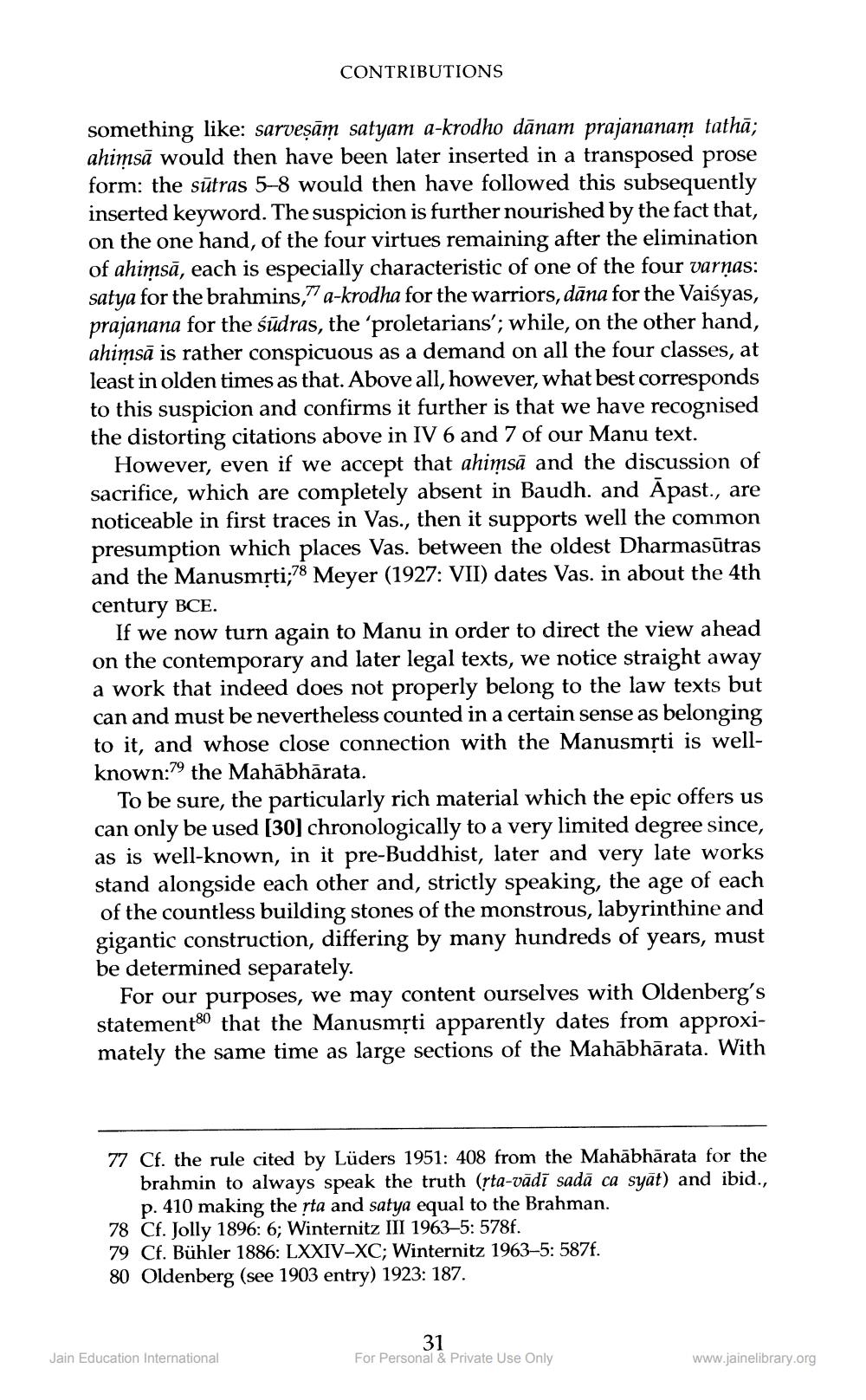________________
CONTRIBUTIONS
something like: sarveşām satyam a-krodho dānam prajananam tathā; ahimsā would then have been later inserted in a transposed prose form: the sūtras 5-8 would then have followed this subsequently inserted keyword. The suspicion is further nourished by the fact that, on the one hand, of the four virtues remaining after the elimination of ahimsā, each is especially characteristic of one of the four varņas: satya for the brahmins, a-krodha for the warriors, dāna for the Vaisyas, prajanana for the sūdras, the 'proletarians'; while, on the other hand, ahimsā is rather conspicuous as a demand on all the four classes, at least in olden times as that. Above all, however, what best corresponds to this suspicion and confirms it further is that we have recognised the distorting citations above in IV 6 and 7 of our Manu text.
However, even if we accept that ahimsā and the discussion of sacrifice, which are completely absent in Baudh. and Āpast., are noticeable in first traces in Vas., then it supports well the common presumption which places Vas. between the oldest Dharmasūtras and the Manusmrti;78 Meyer (1927: VII) dates Vas. in about the 4th century BCE.
If we now turn again to Manu in order to direct the view ahead on the contemporary and later legal texts, we notice straight away a work that indeed does not properly belong to the law texts but can and must be nevertheless counted in a certain sense as belonging to it, and whose close connection with the Manusmrti is wellknown:29 the Mahābhārata.
To be sure, the particularly rich material which the epic offers us can only be used [30] chronologically to a very limited degree since, as is well-known, in it pre-Buddhist, later and very late works stand alongside each other and, strictly speaking, the age of each of the countless building stones of the monstrous, labyrinthine and gigantic construction, differing by many hundreds of years, must be determined separately.
For our purposes, we may content ourselves with Oldenberg's statement80 that the Manusmrti apparently dates from approximately the same time as large sections of the Mahābhārata. With
77 Cf. the rule cited by Lüders 1951: 408 from the Mahābhārata for the
brahmin to always speak the truth (rta-vādī sadā ca syāt) and ibid.,
p. 410 making the sta and satya equal to the Brahman. 78 Cf. Jolly 1896: 6; Winternitz III 1963–5: 578f. 79 Cf. Bühler 1886: LXXIV-XC; Winternitz 1963–5: 587f. 80 Oldenberg (see 1903 entry) 1923: 187.
31
Jain Education International
For Personal & Private Use Only
www.jainelibrary.org




